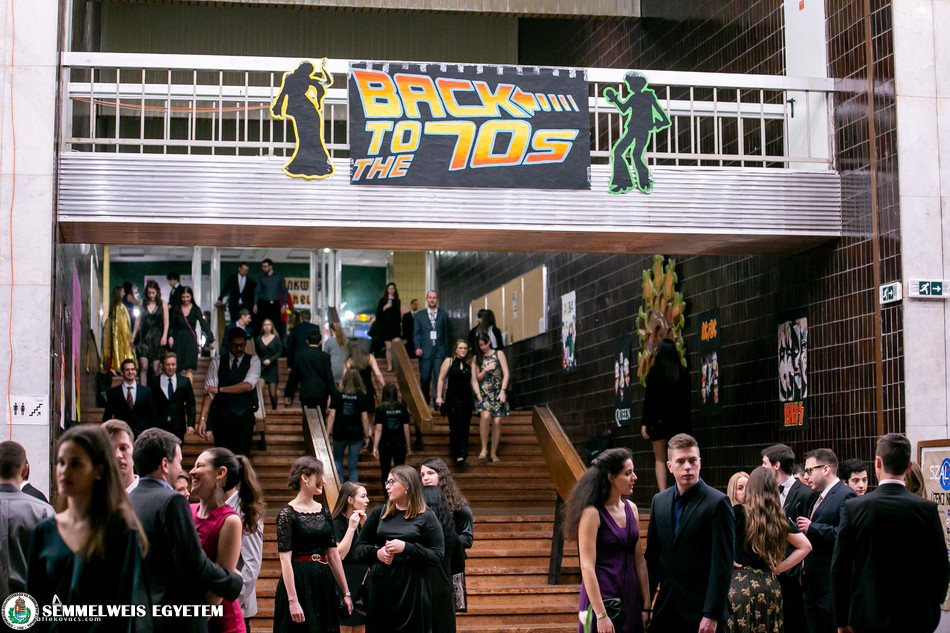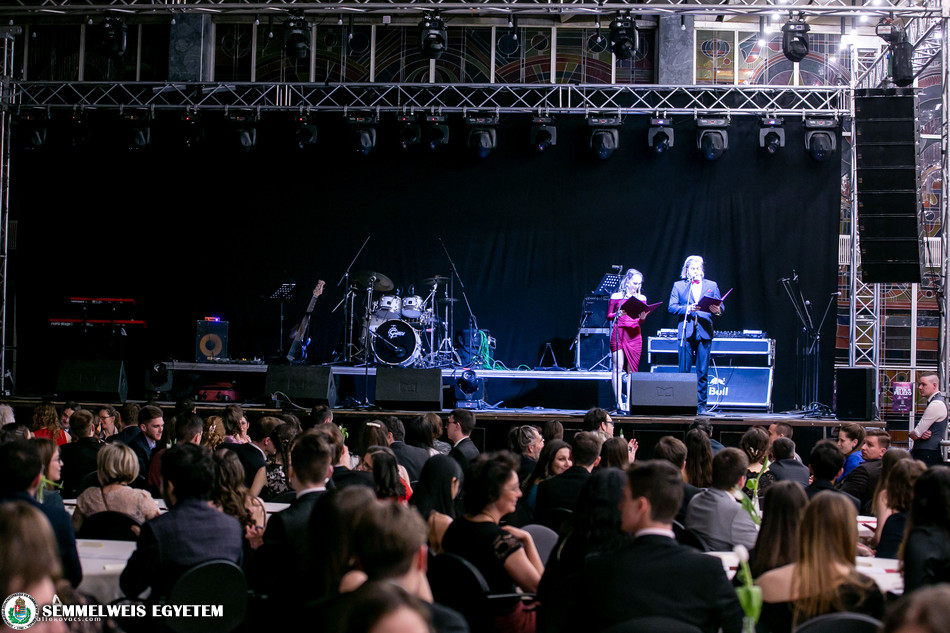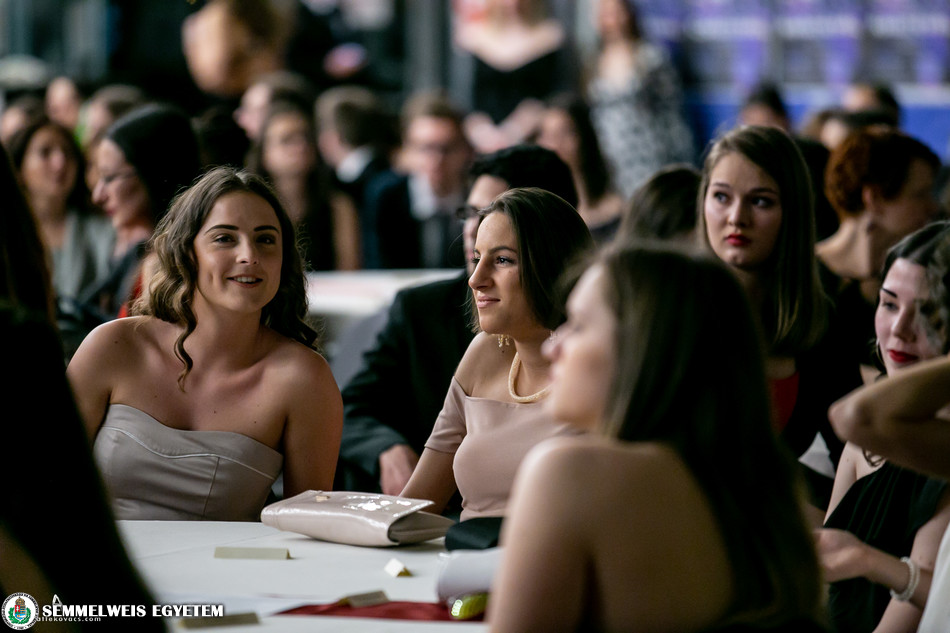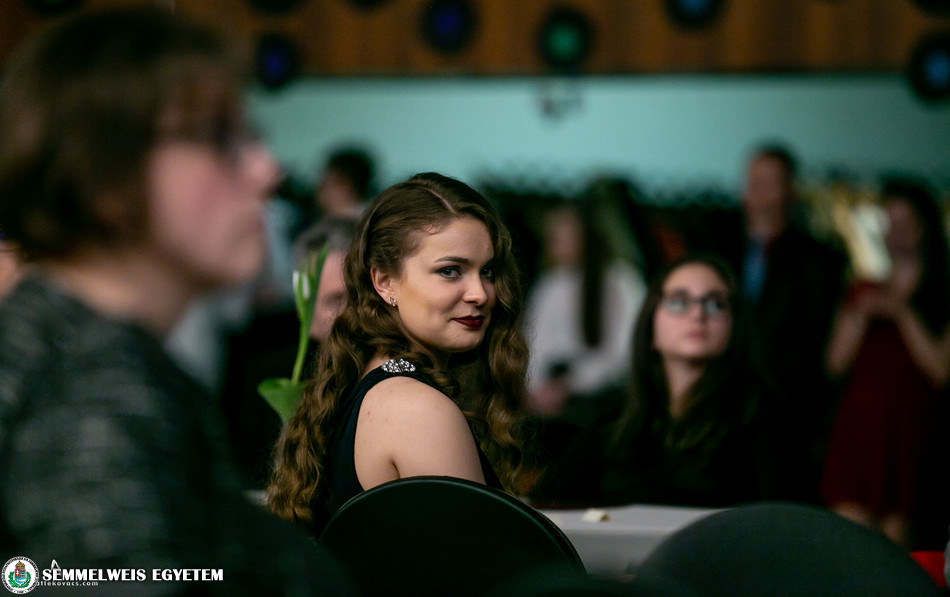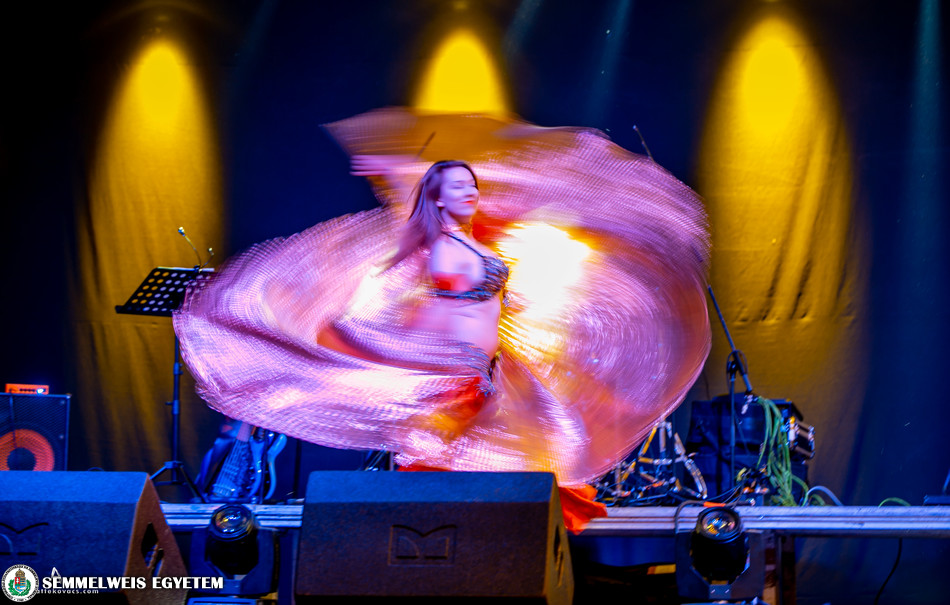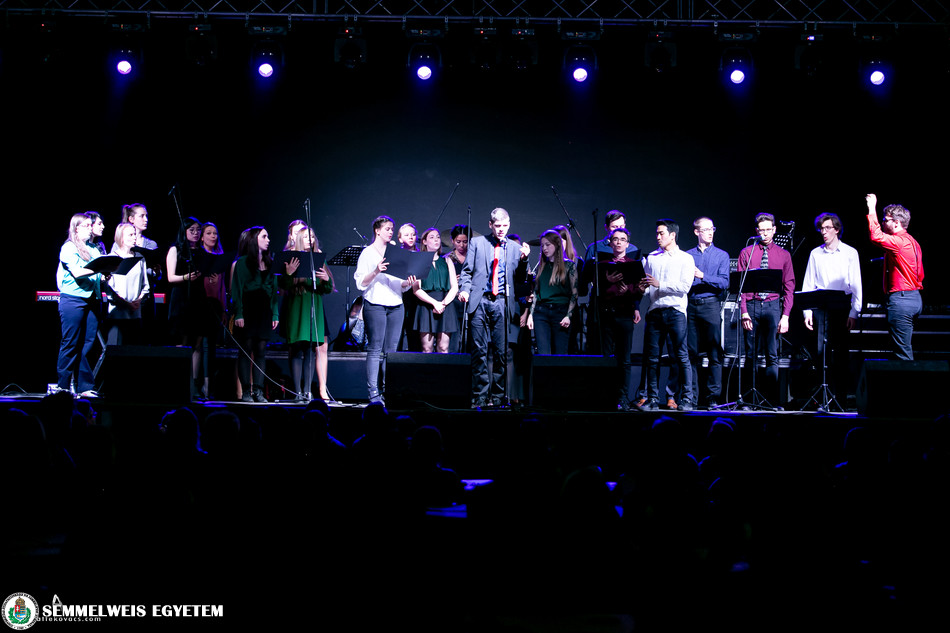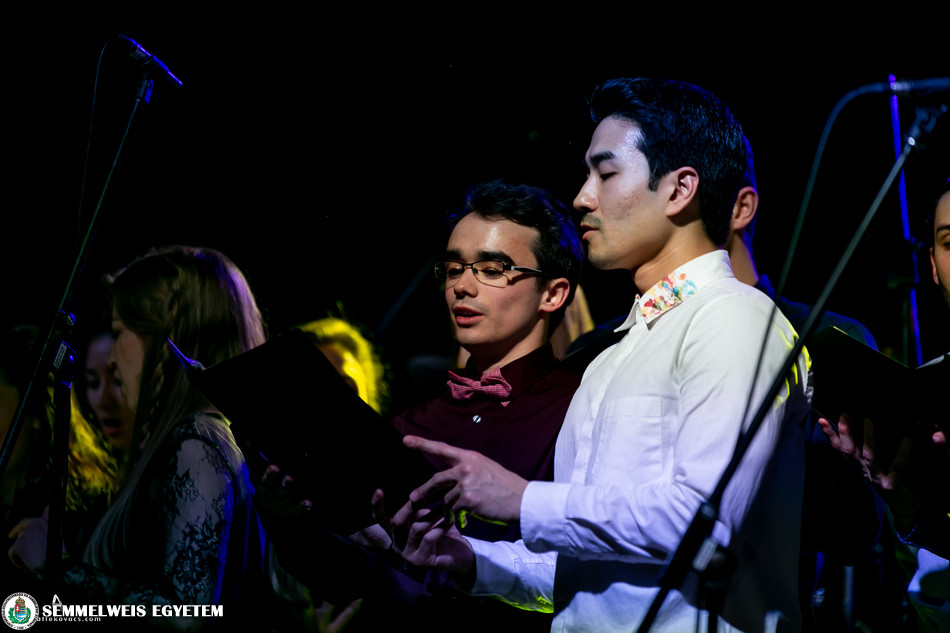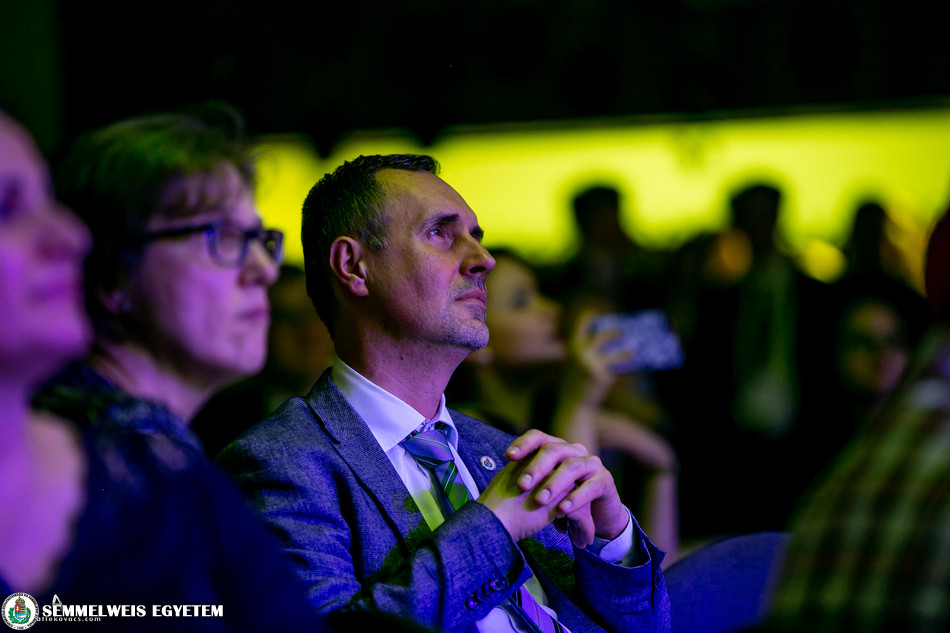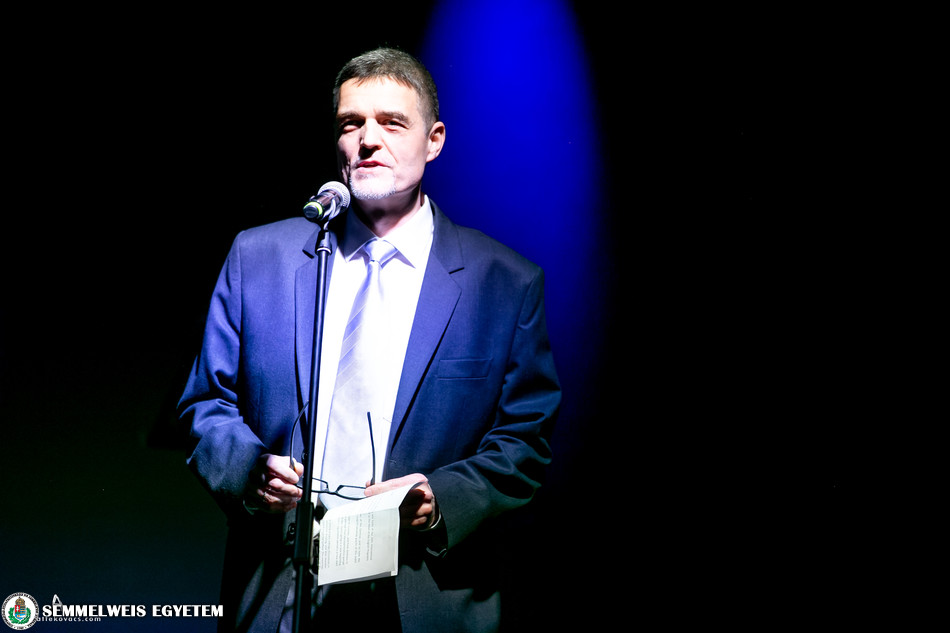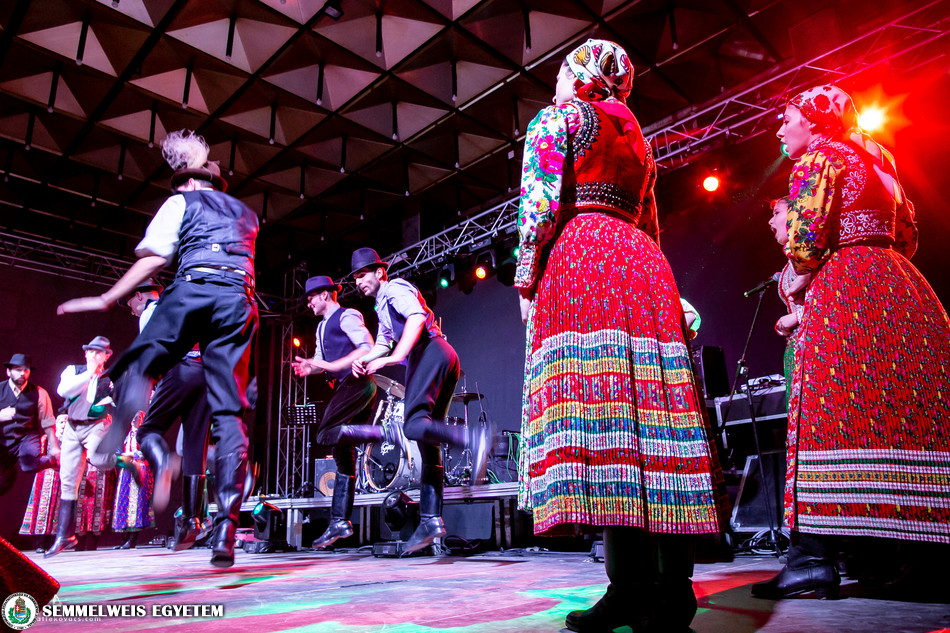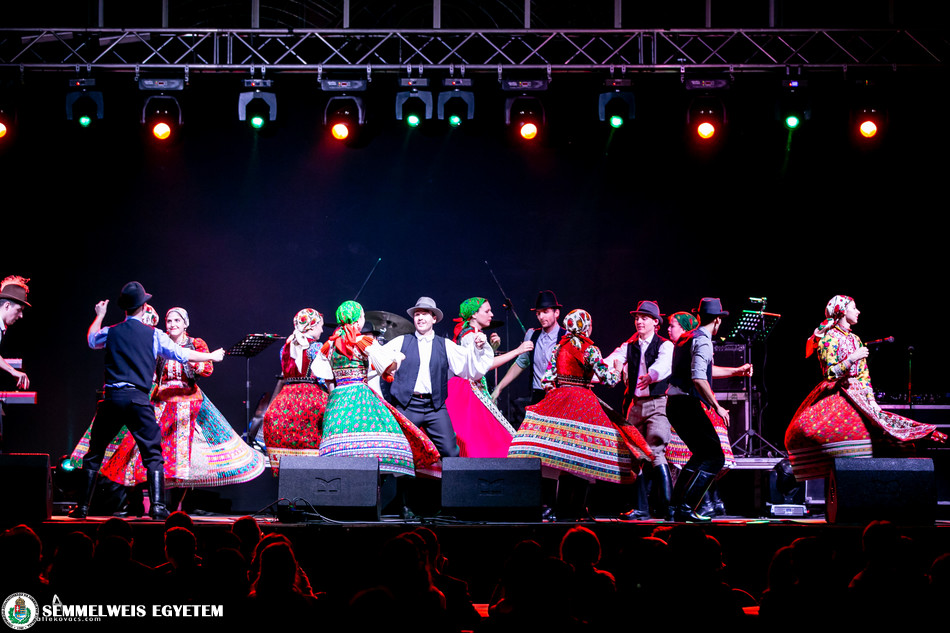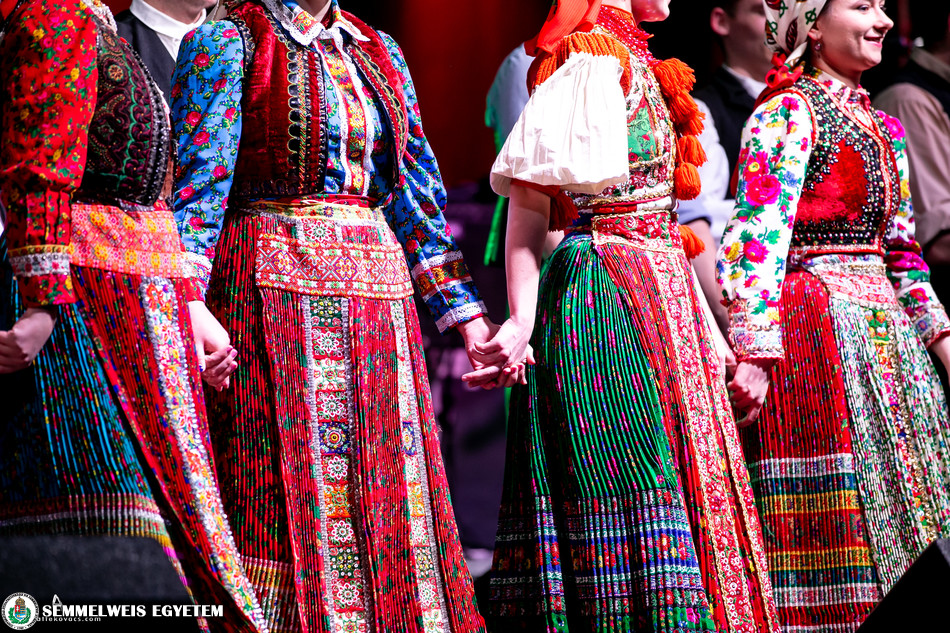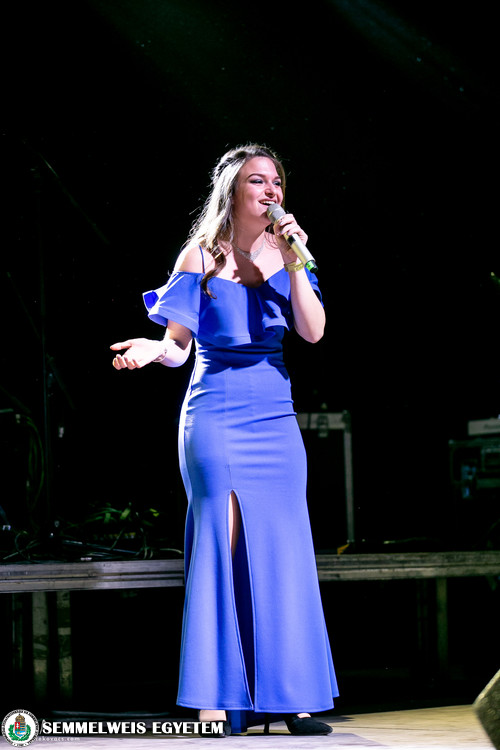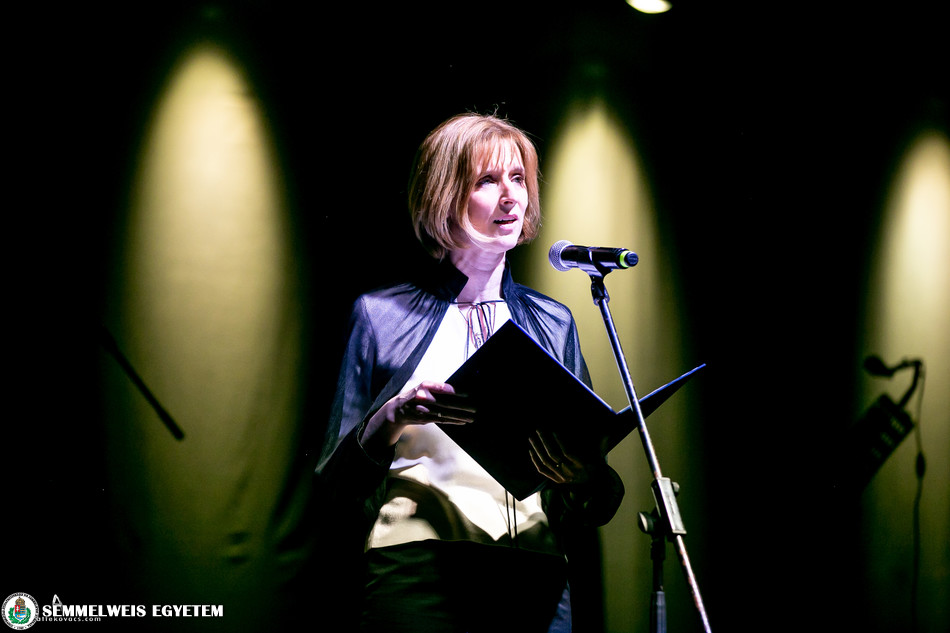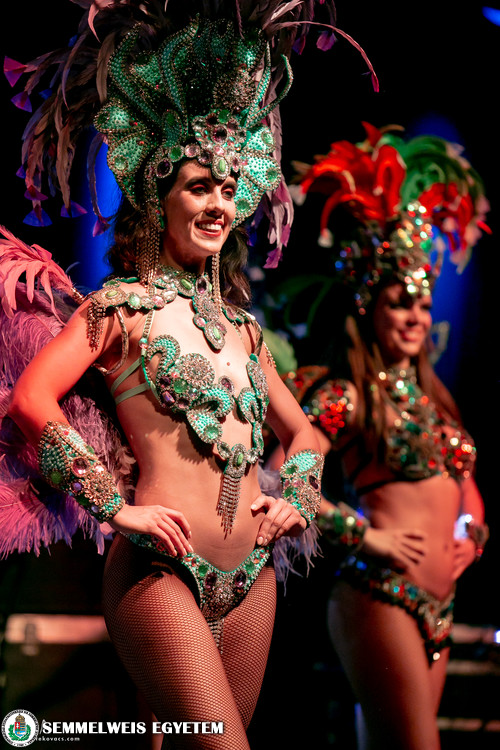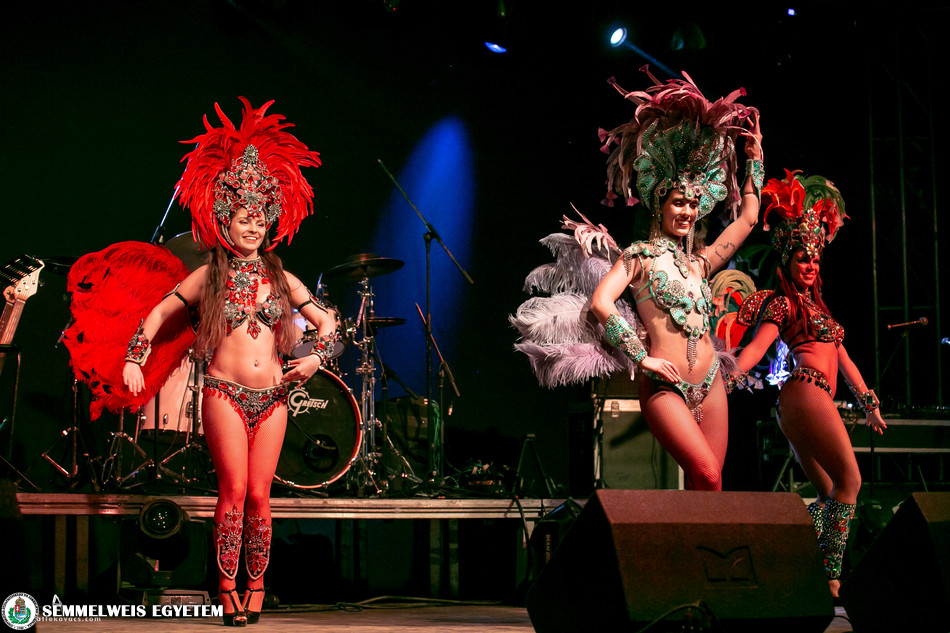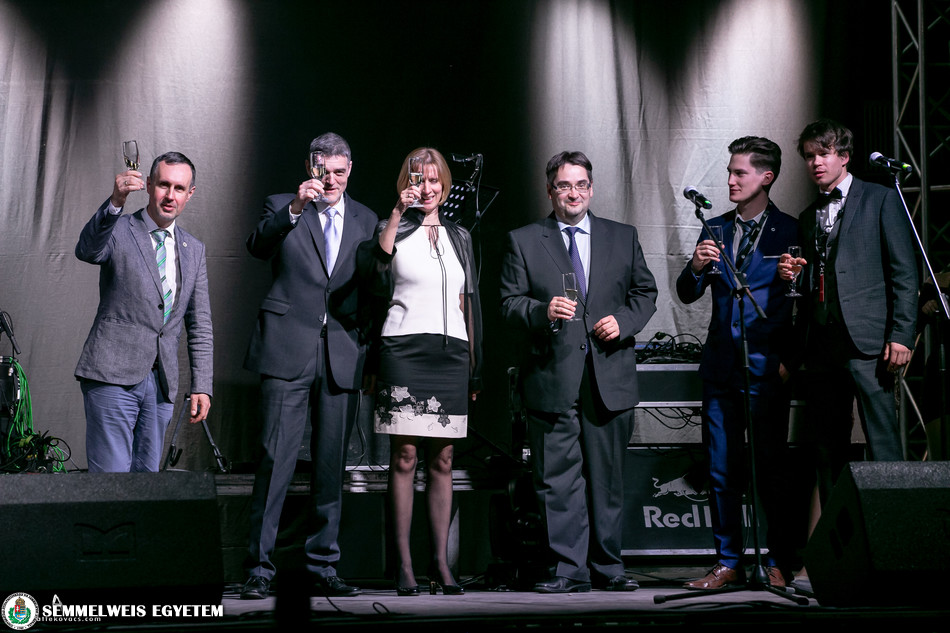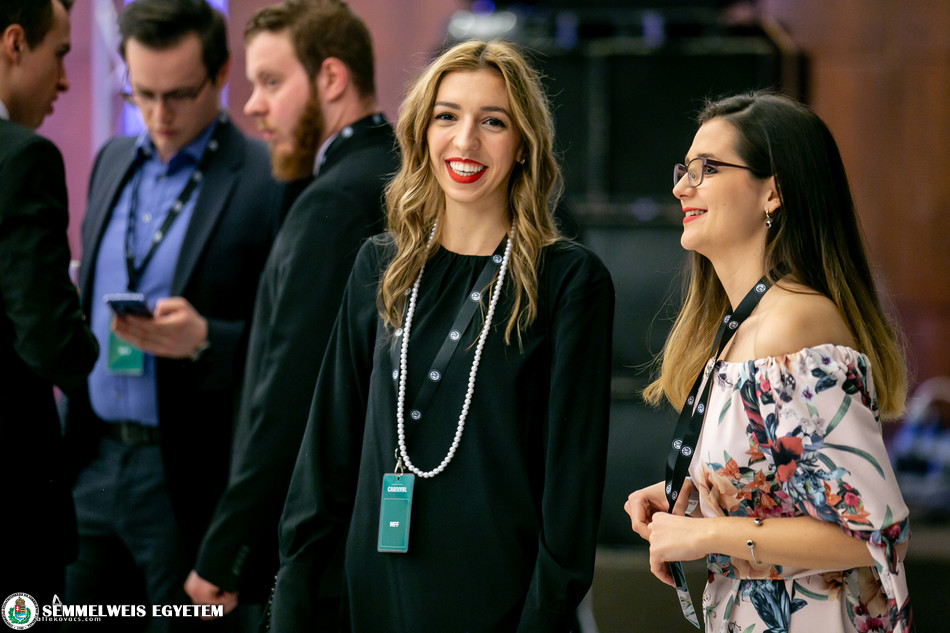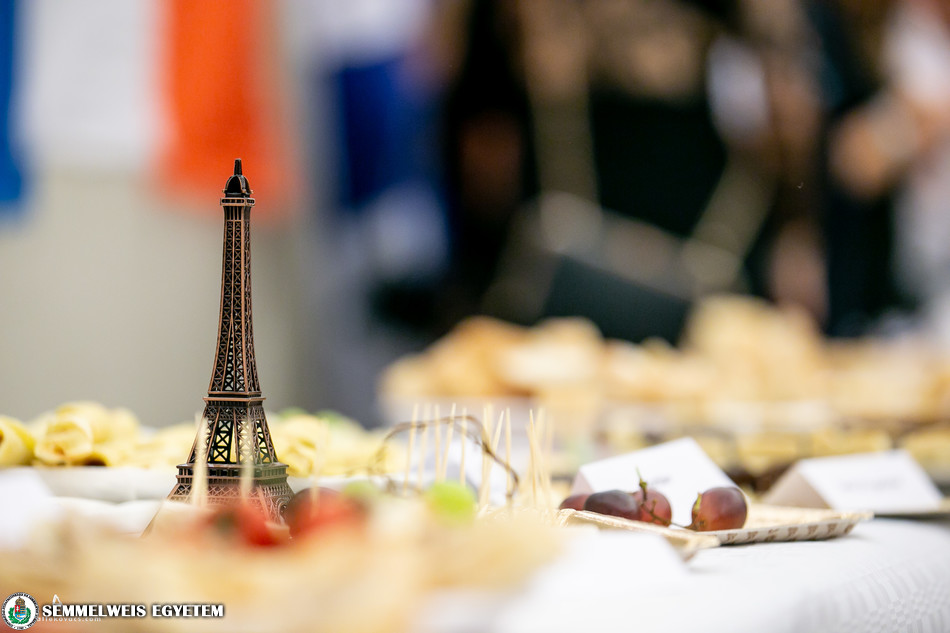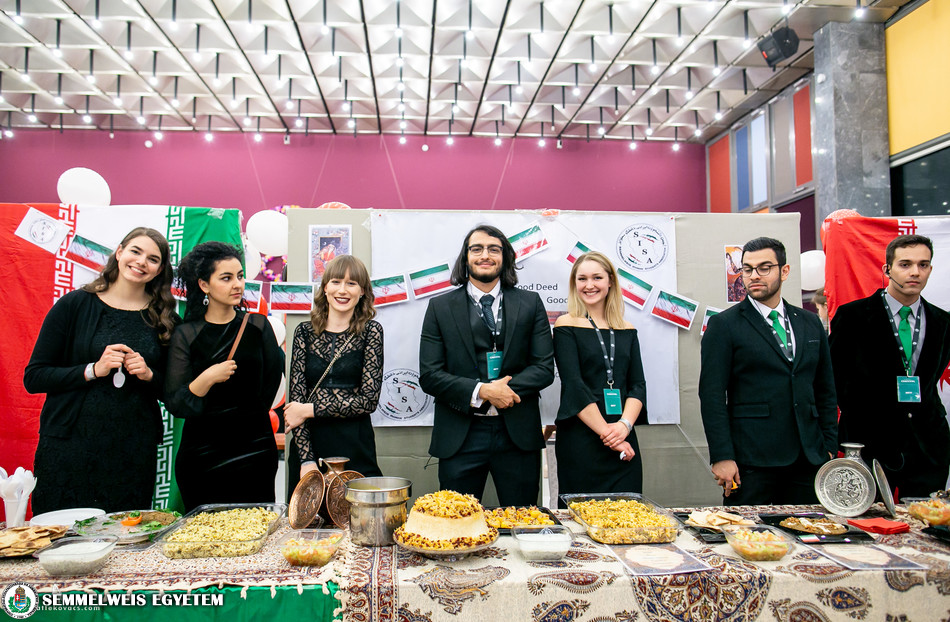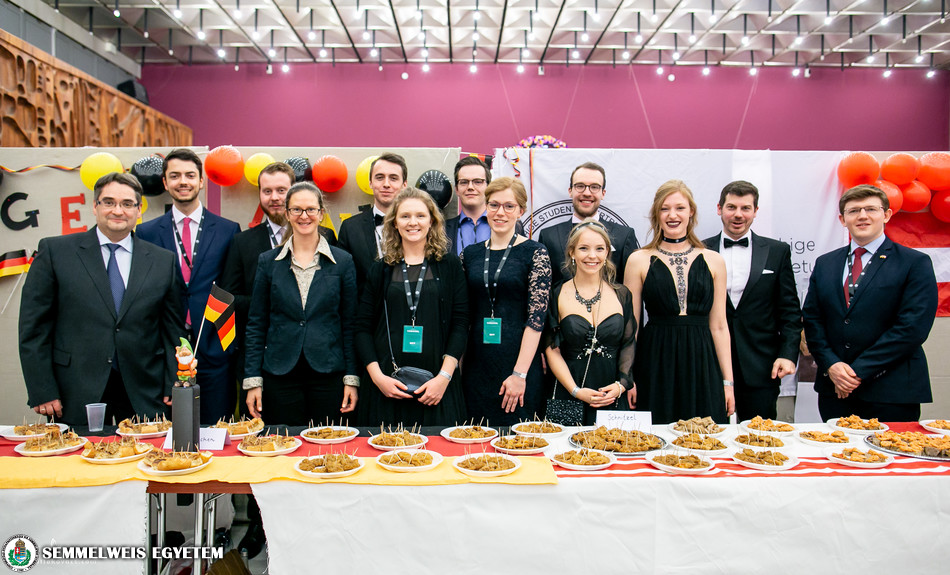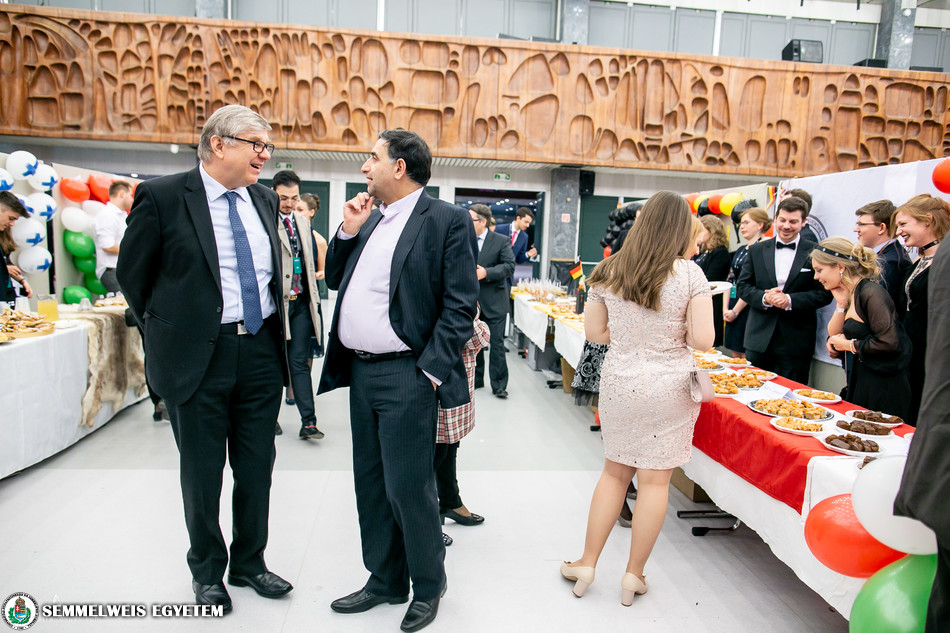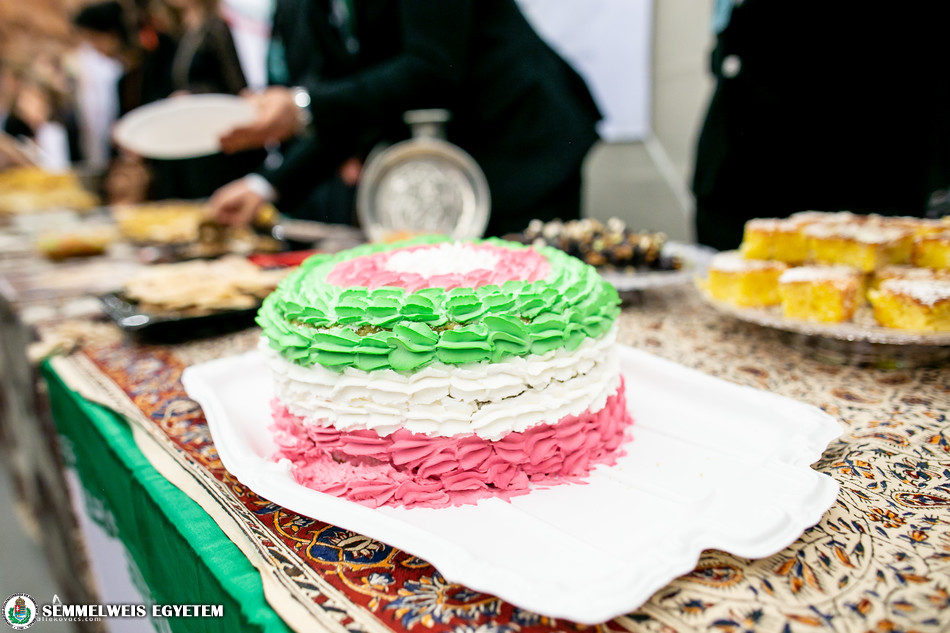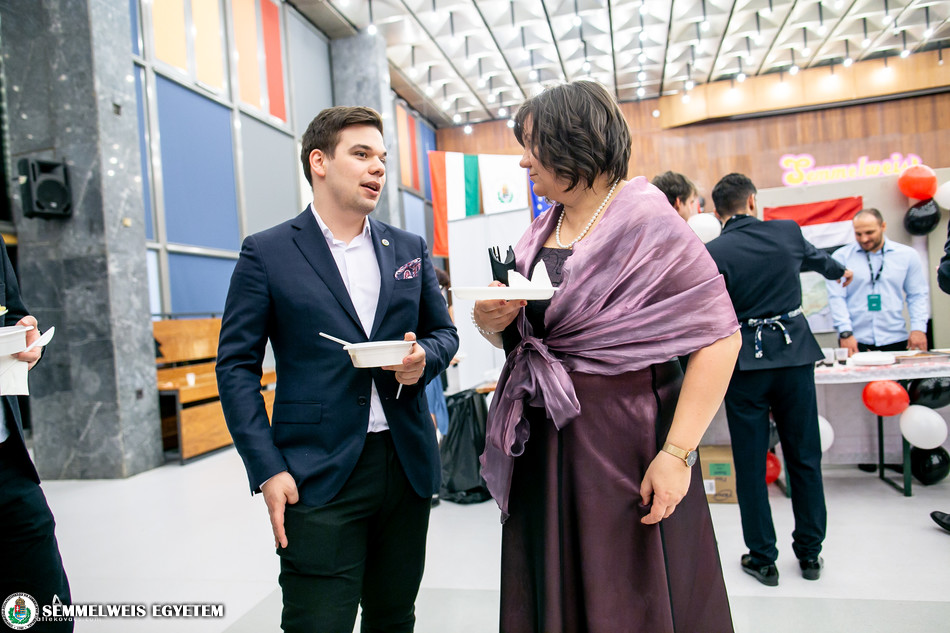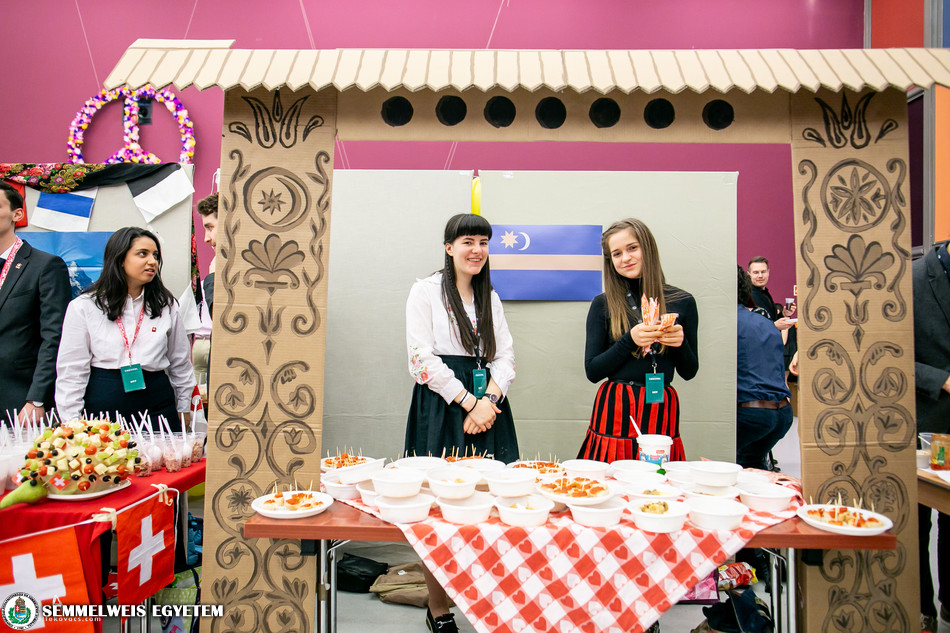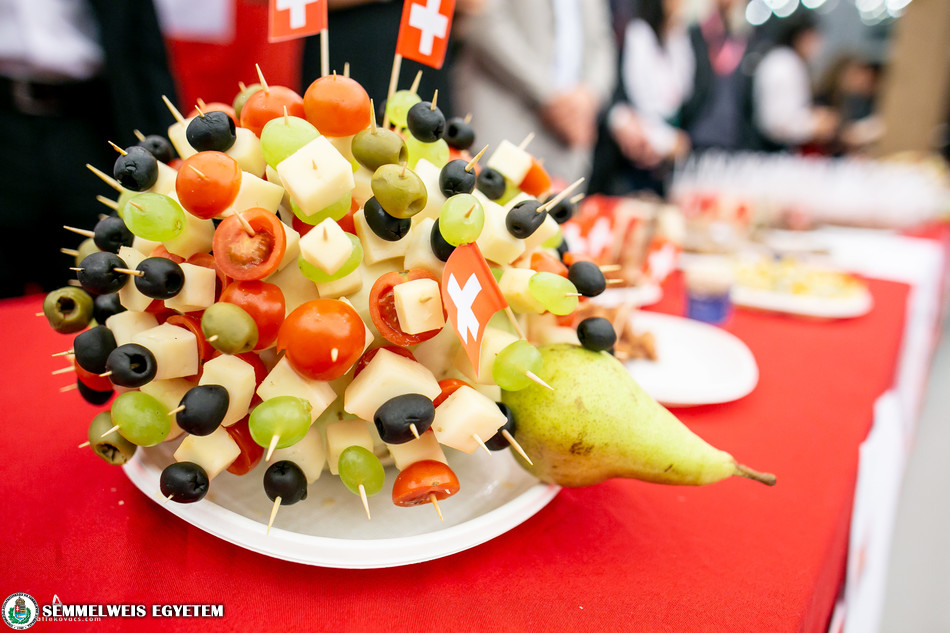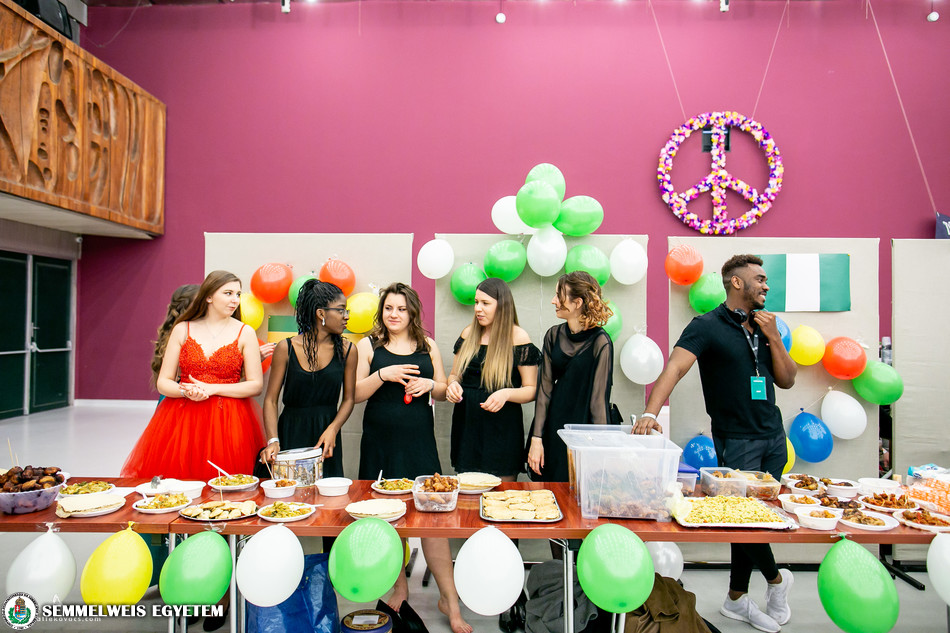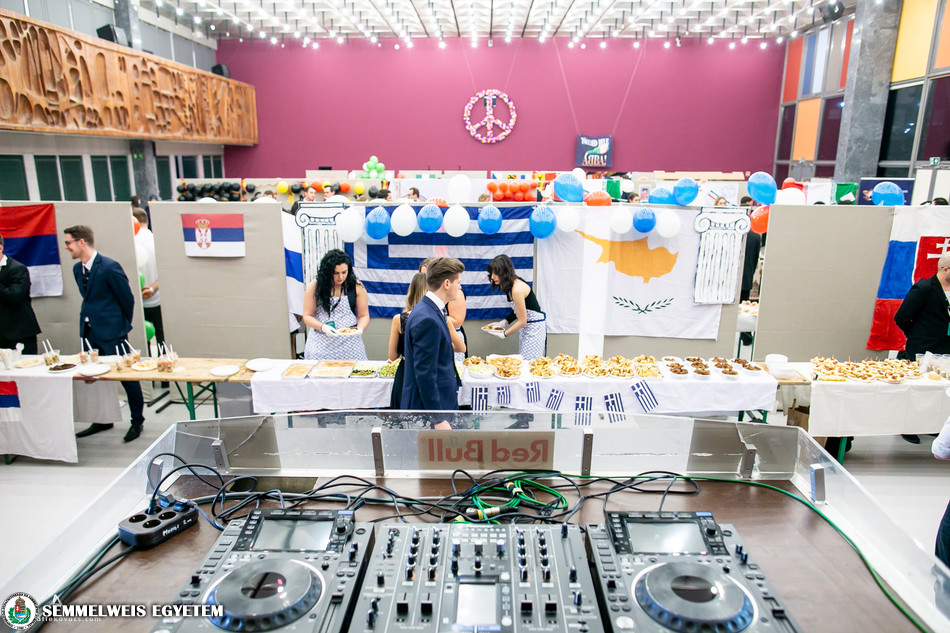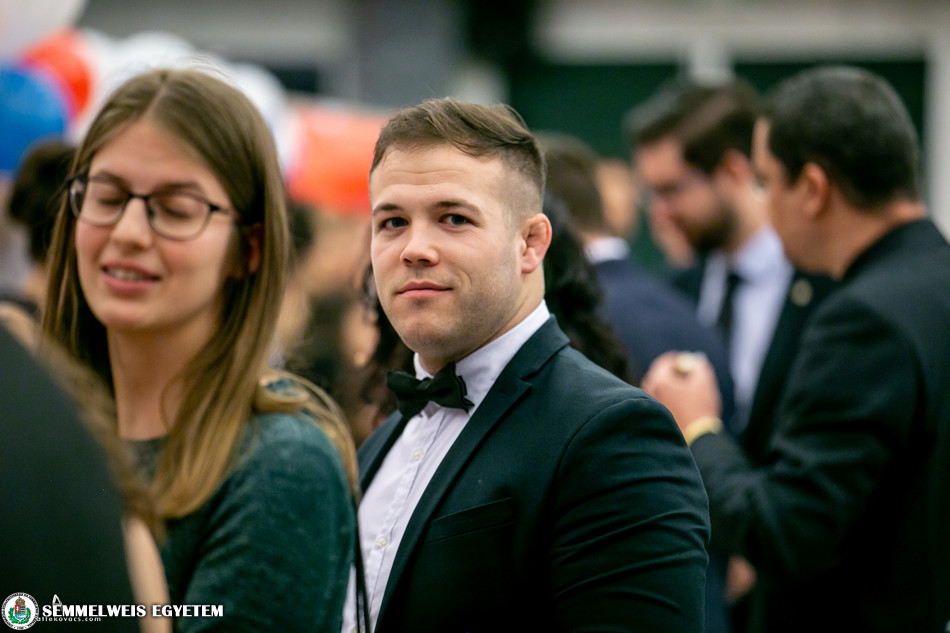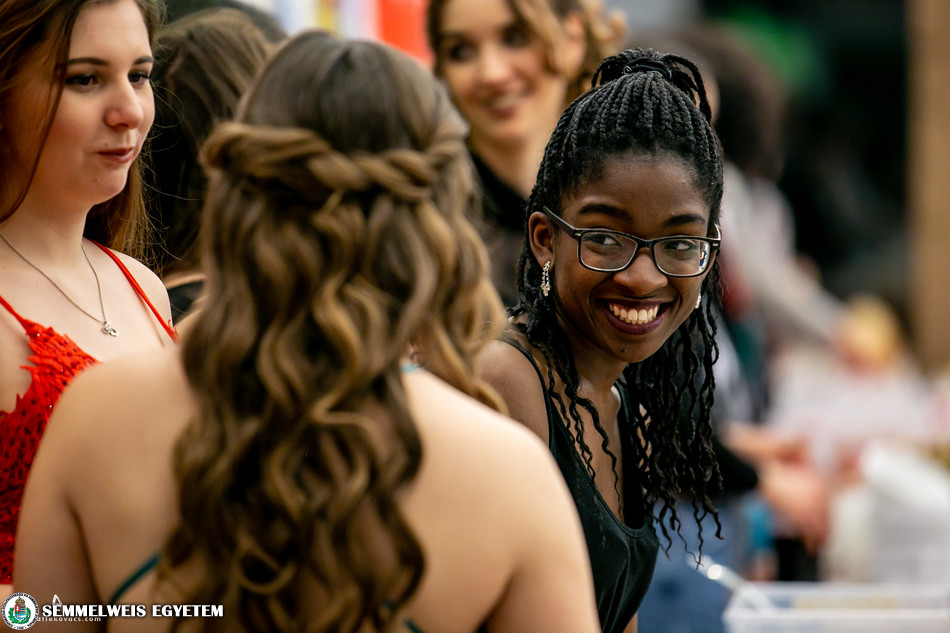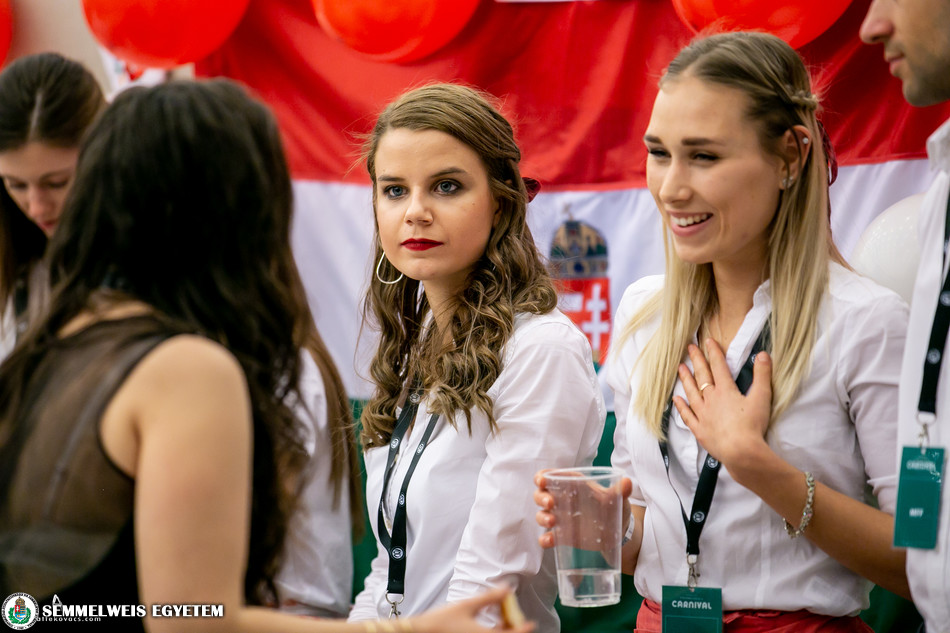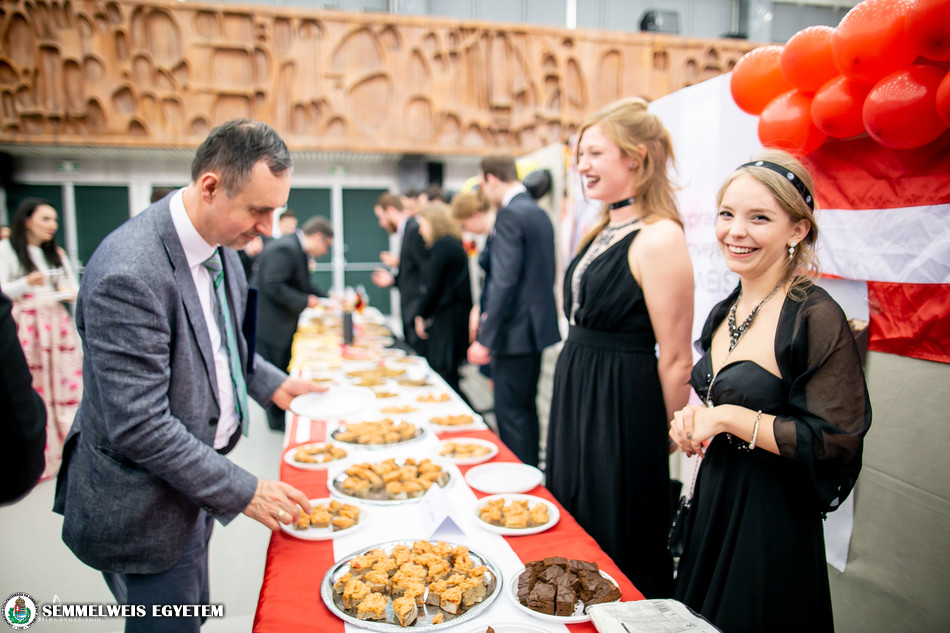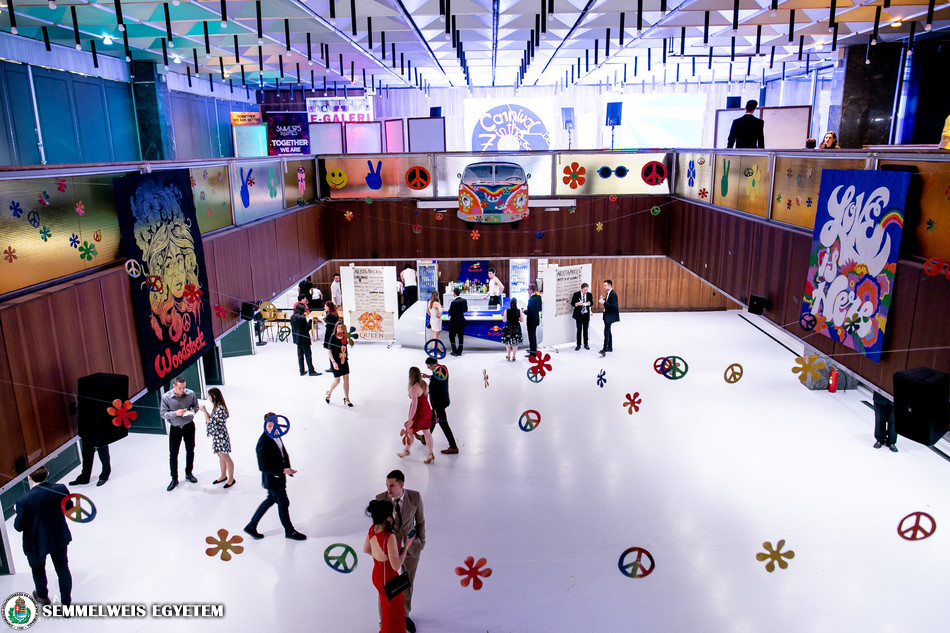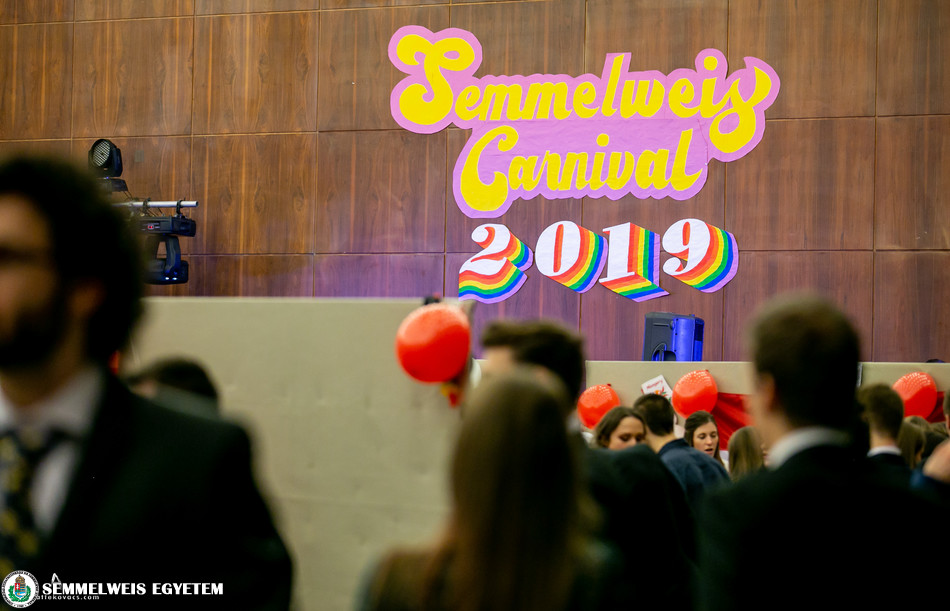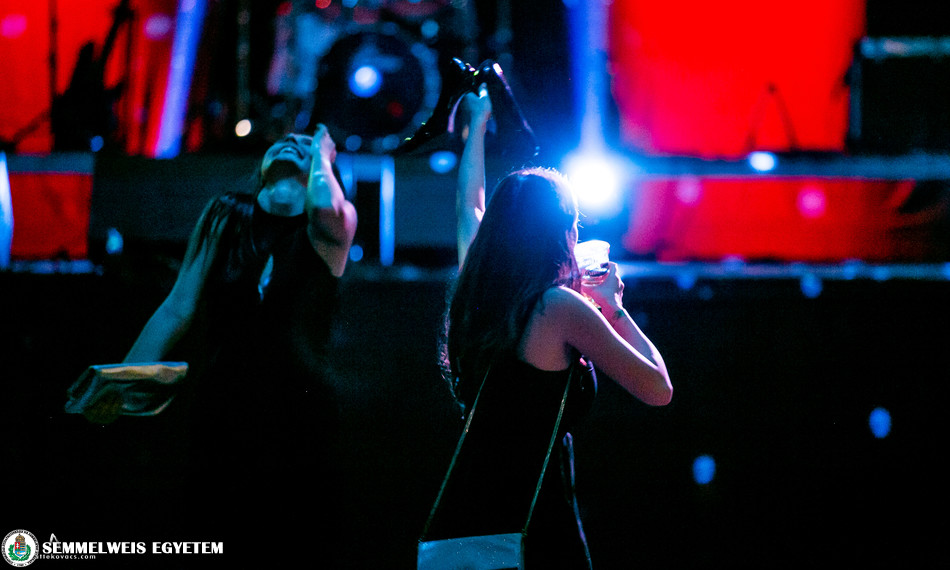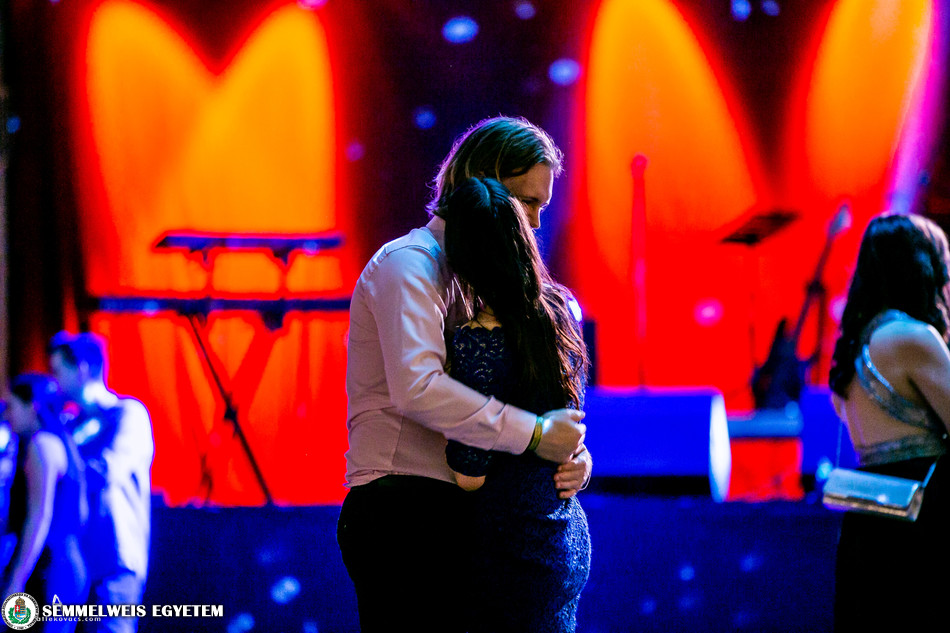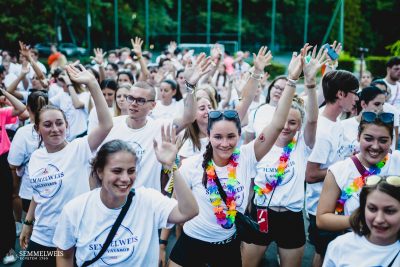A total of 17 countries were represented at this year’s International Semmelweis Carnival, the largest international student event of Semmelweis University, which was held for the tenth time. The goal of the event is to bring the university’s Hungarian and foreign students closer together.
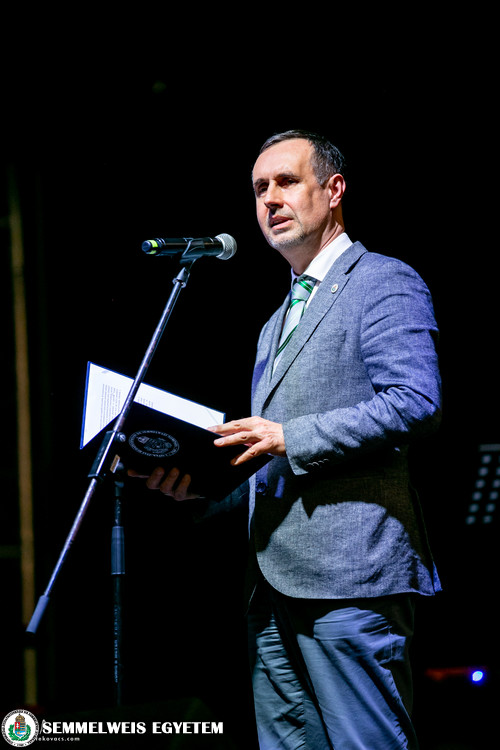 The carnival, which was held in the Nagyvárad tér Theoretical Building (NET), was opened with a speech by Dr. Attila Szabó, vice-rector for clinical affairs, before the more than 2000 participants, which in addition to the students included university leaders and educators, as well as ambassadors from several countries. In his address, he noted that the 250-year-old Semmelweis University is among the world’s most international institutions, with a quarter of its more than 10,000 students foreigners who came to Budapest from 70 countries of the five continents. He added that the English-language program at the university was launched 30 years ago, while the German language program has also been running for 36 years.
The carnival, which was held in the Nagyvárad tér Theoretical Building (NET), was opened with a speech by Dr. Attila Szabó, vice-rector for clinical affairs, before the more than 2000 participants, which in addition to the students included university leaders and educators, as well as ambassadors from several countries. In his address, he noted that the 250-year-old Semmelweis University is among the world’s most international institutions, with a quarter of its more than 10,000 students foreigners who came to Budapest from 70 countries of the five continents. He added that the English-language program at the university was launched 30 years ago, while the German language program has also been running for 36 years.
Dr. Attila Szabó said that during the forthcoming jubilee academic year, the university is starting to build the foundations for the next quarter millennium, which will include the first great curriculum reform in medical education, with the involvement of national partner institutions. He emphasized that in this, as well as in other issues concerning students, the university is counting on its student body as strategic partners. In the interest of this goal, after the recent Hungarian student forum, a separate international student forum will be held as well before the end of the academic year, he added.
Next, Dr. Miklós Csala, the organizing coordinator of English-speaking education for the Foreign Students Secretariat (KHT), greeted those present in a speech delivered in English. In his address, he stated his belief that everyone could benefit from stronger interaction and more intense cooperation between the university’s students of different nationalities, and therefore all initiatives toward this goal can count on the whole-hearted support of university leaders. He noted that the Multicultural Food Festival held as part of the carnival is an excellent example that demonstrates how different nations and cultures can cooperate in harmony.
“Semmelweis University is a truly international university and we, educators as well as students, can consider ourselves lucky to be part of a genuine multicultural community,” said Dr. Veronika Müller, the director of the Department of Pulmonology and an appointed rector’s commissioner of the KHT, in her German-language greeting speech. “We hope that even after they graduate, our students won’t forget as alumni members that they got their diploma at Semmelweis University and they will be proud of their alma mater,” she added. Dr. Müller emphasized that it is the goal of the university to support all types of events where Hungarian and foreign students can meet and celebrate together as one community.
As part of the carnival’s opening ceremony, students also performed various music and dance productions, portraying elements of different national cultures: this year, for example, guests were treated to a belly-dance performance, a samba dance production, a folk dance presentation from Transylvania’s Kalotaszeg region, a choir singing a Queen song, as well as a classic Etta James tune sung by a student.
Each year, the Semmelweis Carnival is organized around a different theme, which this year was “Back to the 70s” and was reflected in the decorations as well as the musical program, András Merényi, who organized the event together with Richárd Makk, told our website. He added that the event included musical performances by the bands Groovehouse and Cloud9+, as well several DJs that are students at the university, among them one from Nigeria.
In line with tradition, the Multicultural Food Festival was organized as part of the carnival this year as well, where gastronomic specialties of 17 nations were offered by foreign students dressed in folk costumes. Guests had the opportunity to taste, among others, Lebanese and Yemeni specialties, as well as typical dishes of Hungarian cuisine, but there were also stands serving Russian, Ukrainian and Serbian food for the first time this year.
As in previous years, the carnival was organized by the biggest student organizations: Semmelweis University’s Students’ Union (HÖK), the Instructor Self-Active Group (IÖCS), and the Deutschsprachige Studentenvertretung Semmelweis (DSVS).
Tamás Deme
Photo: Attila Kovács – Semmelweis University
